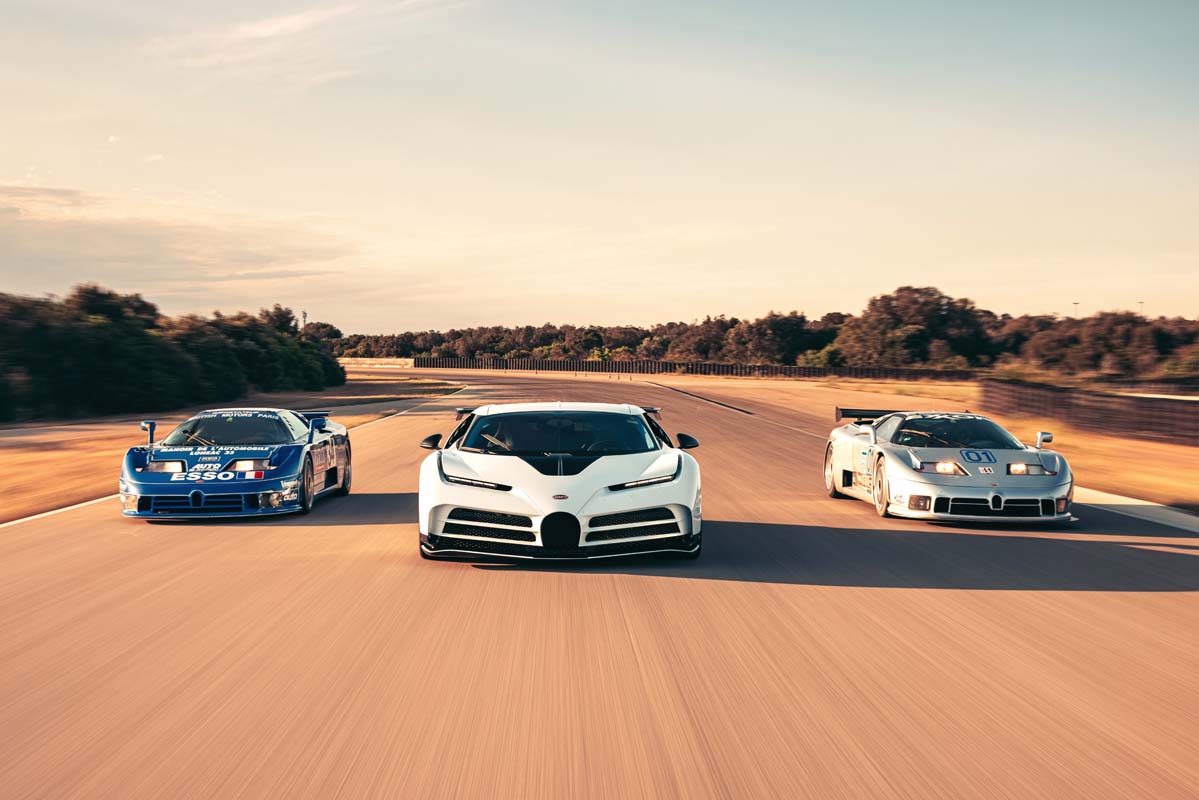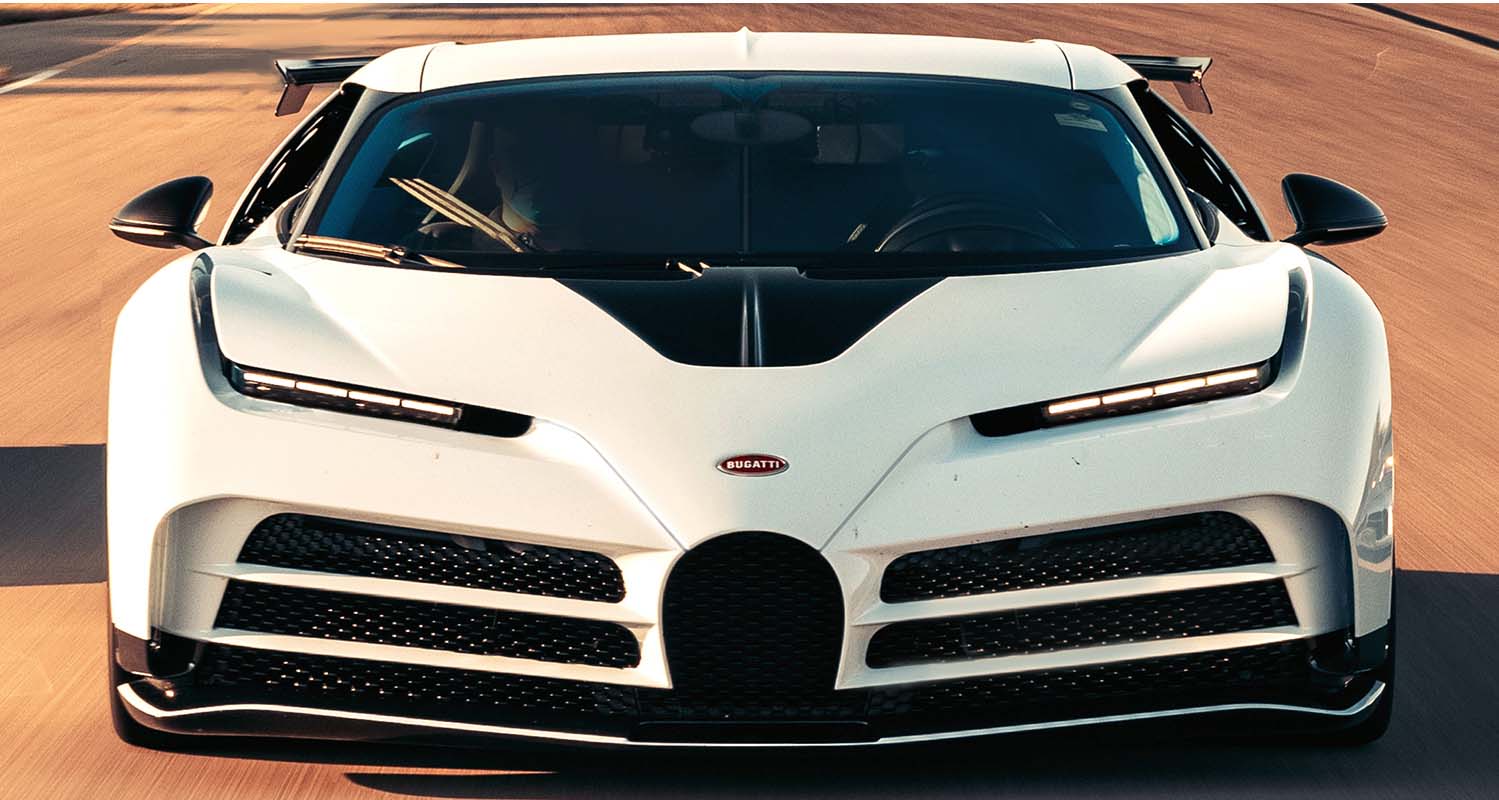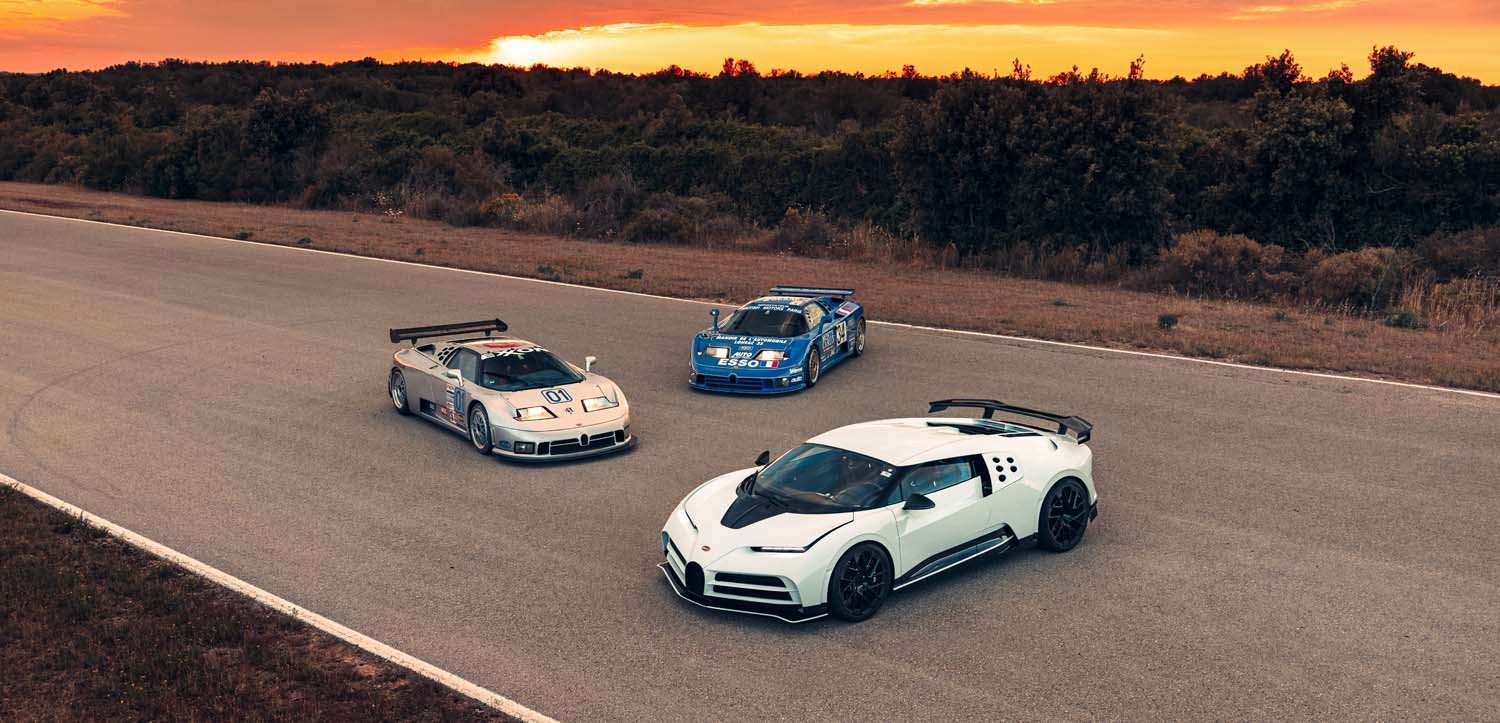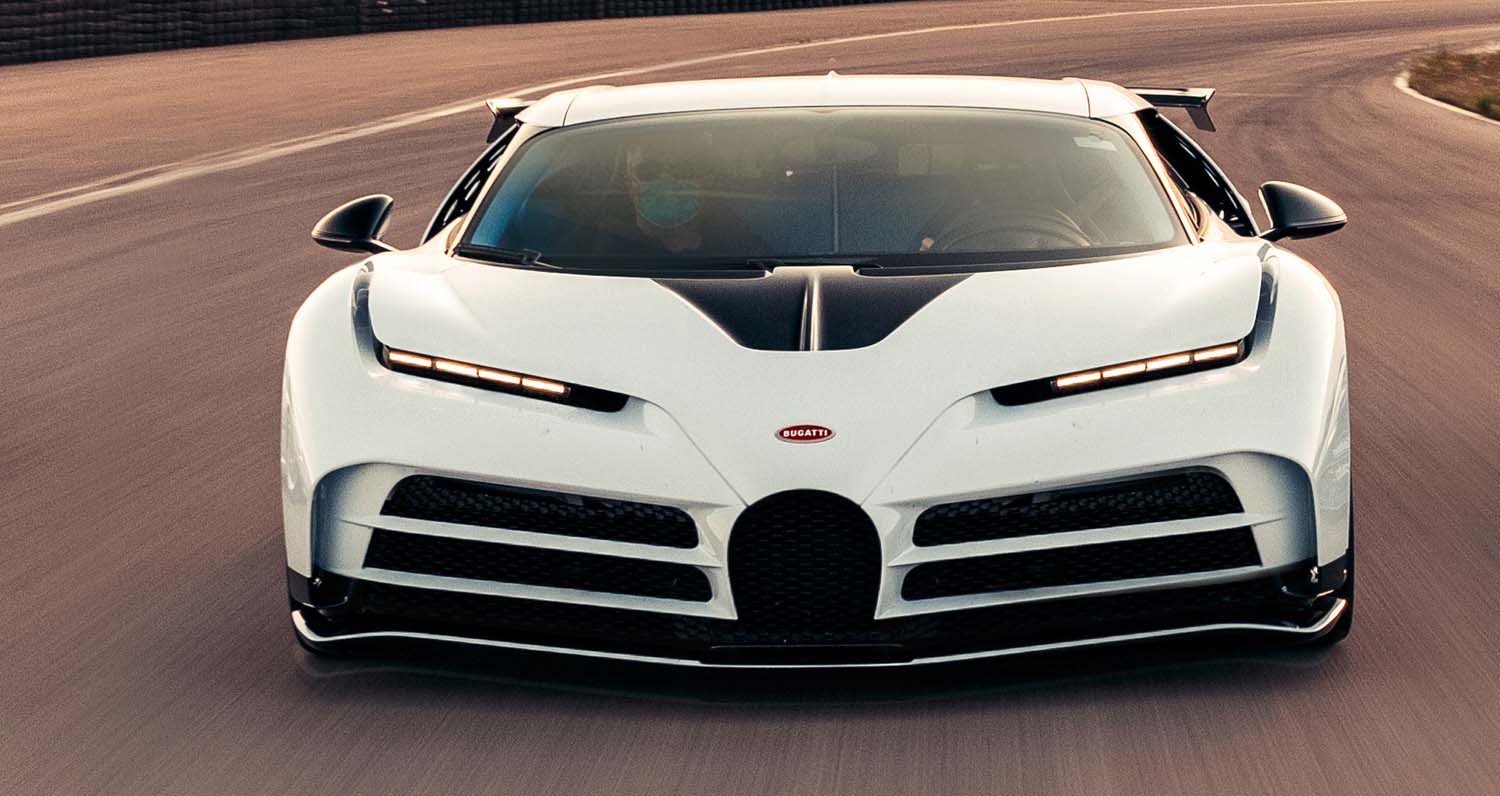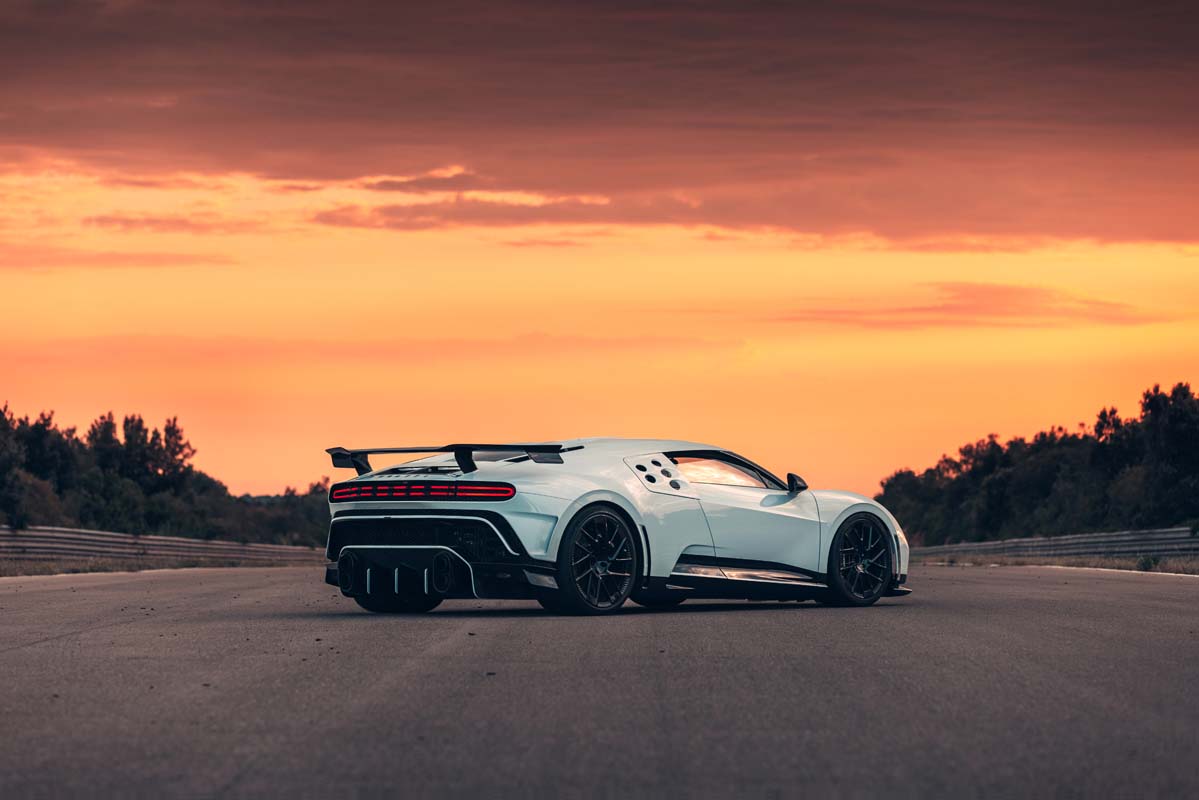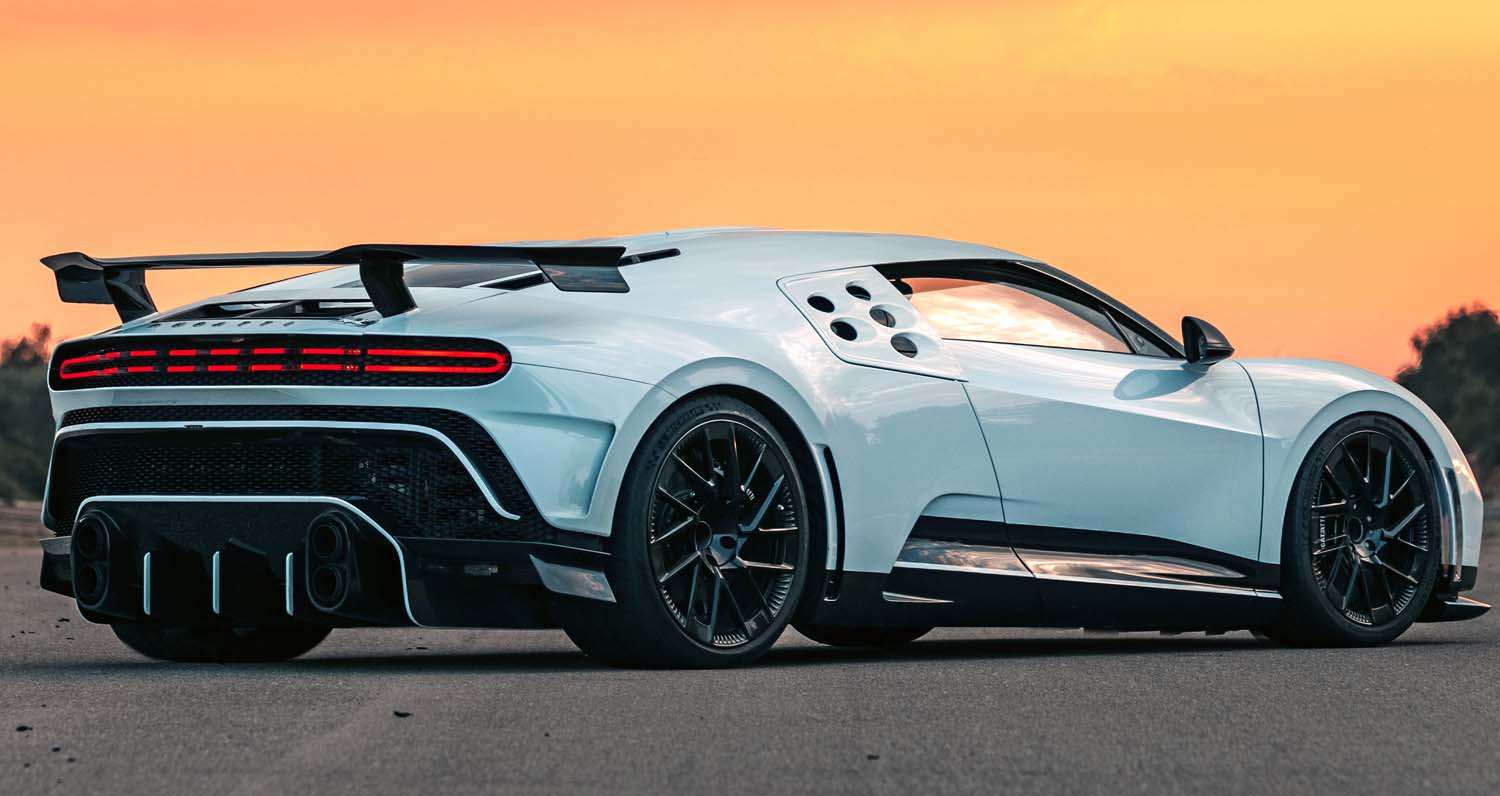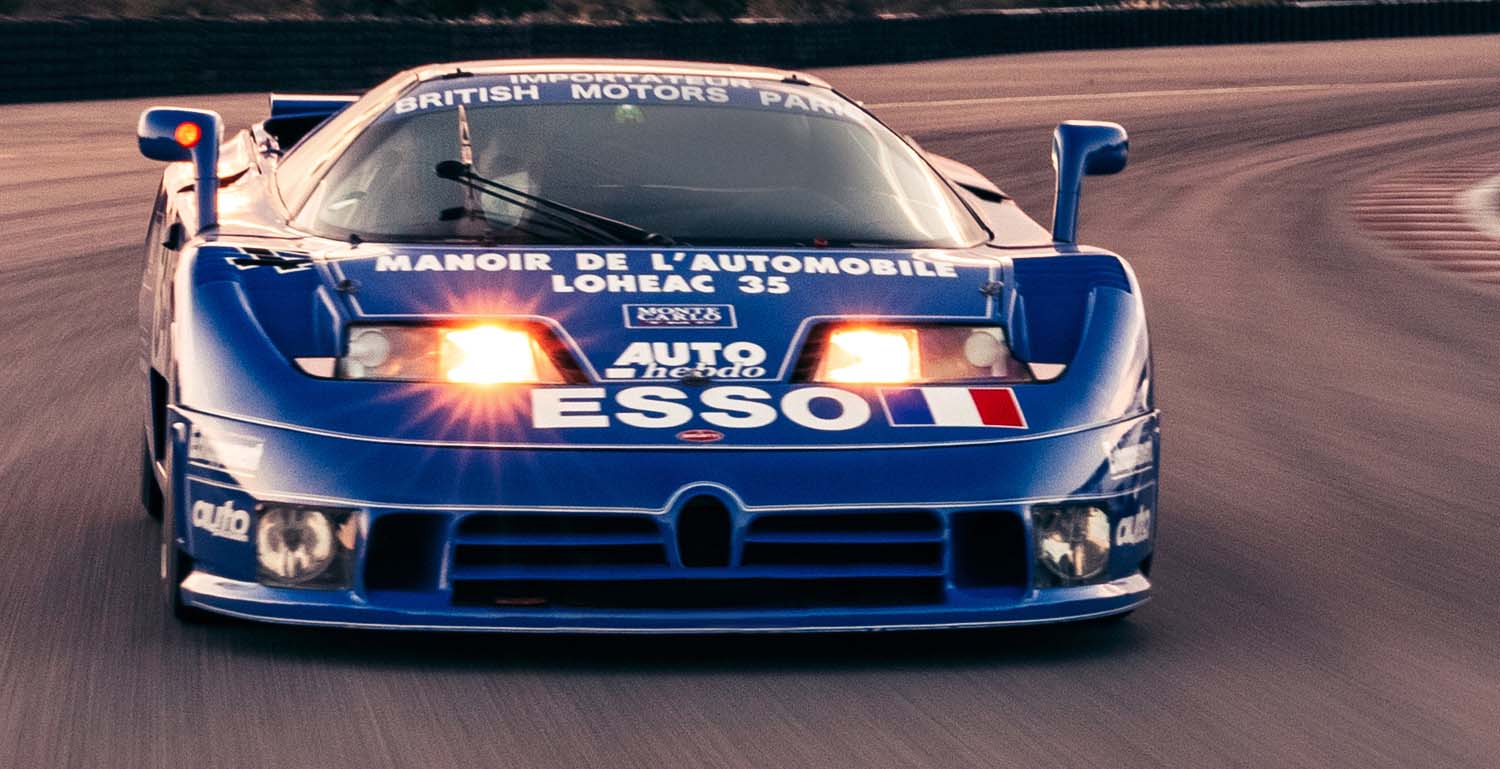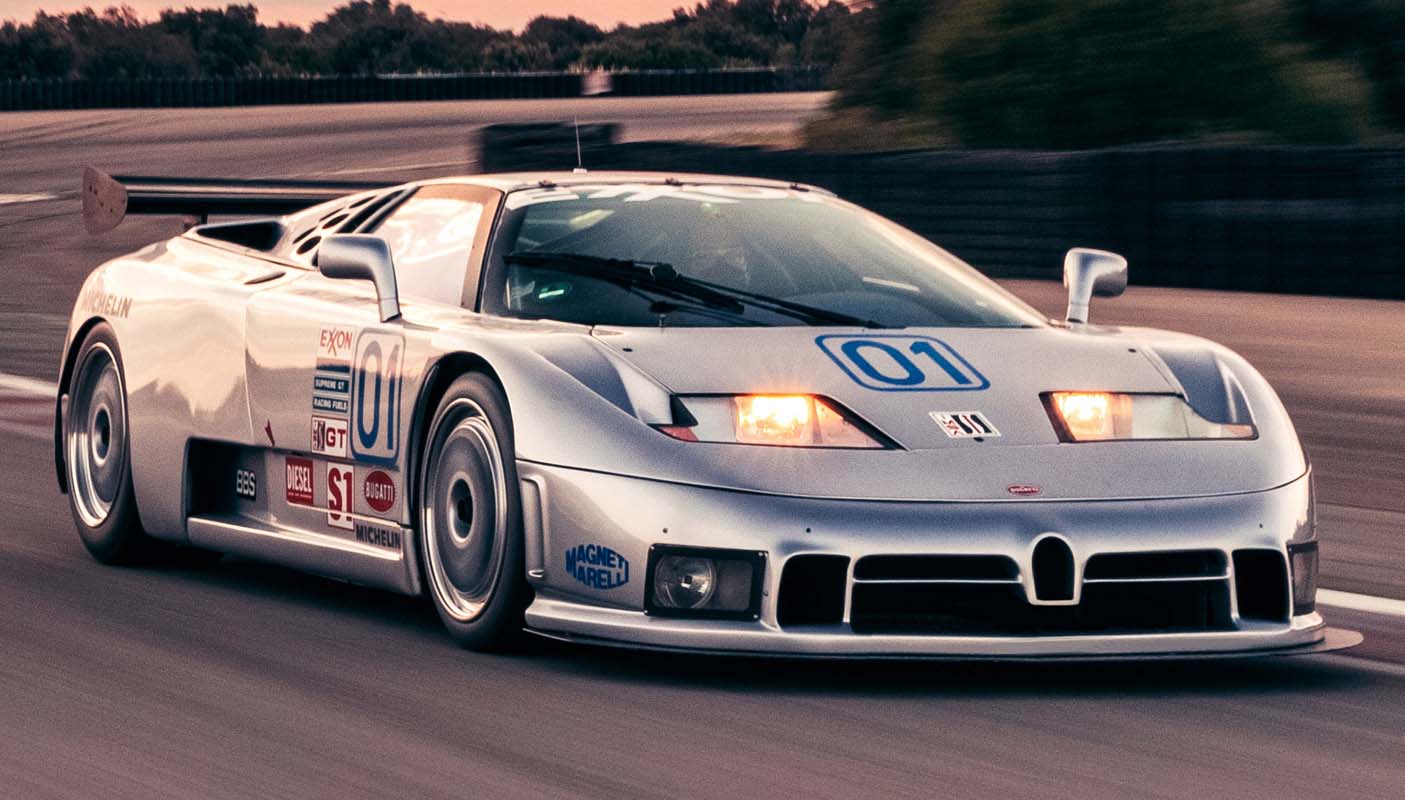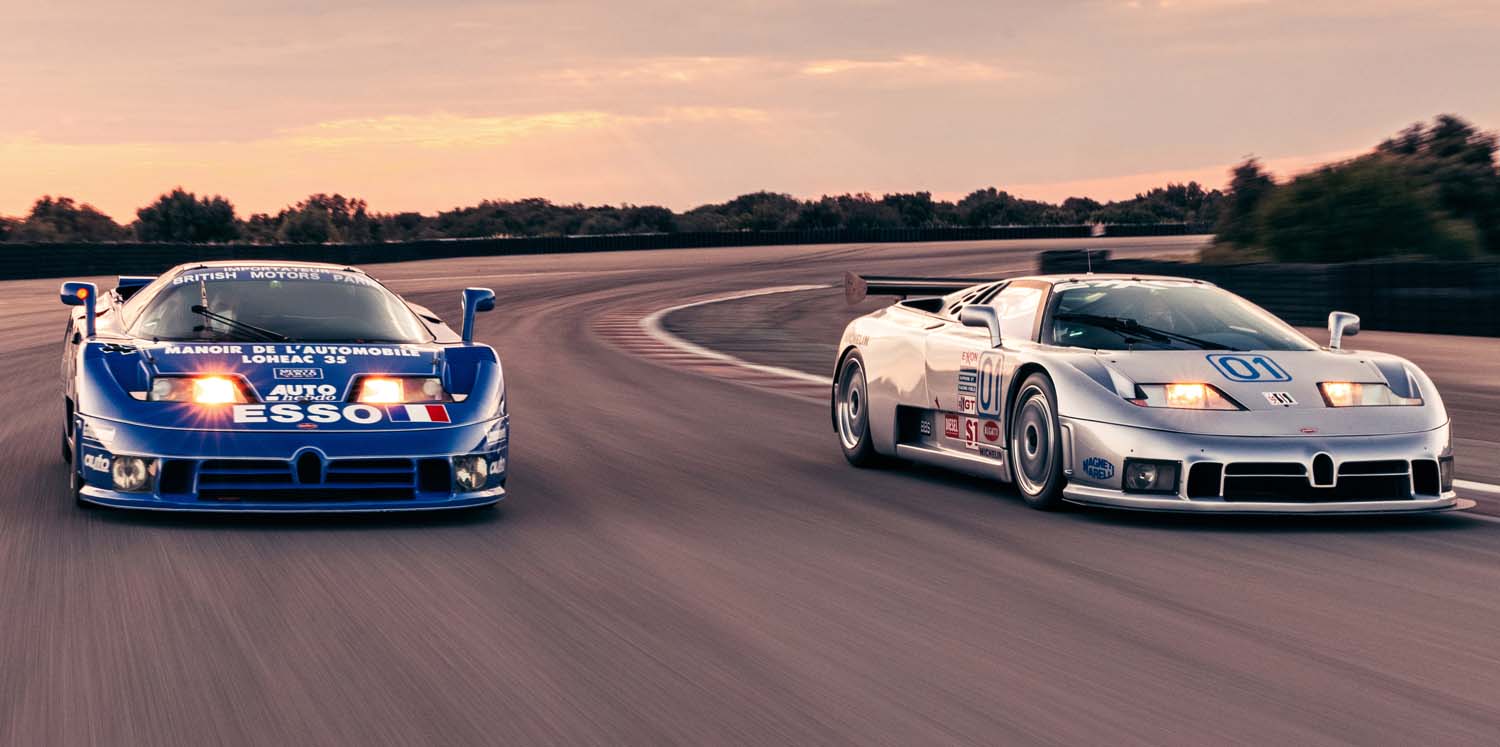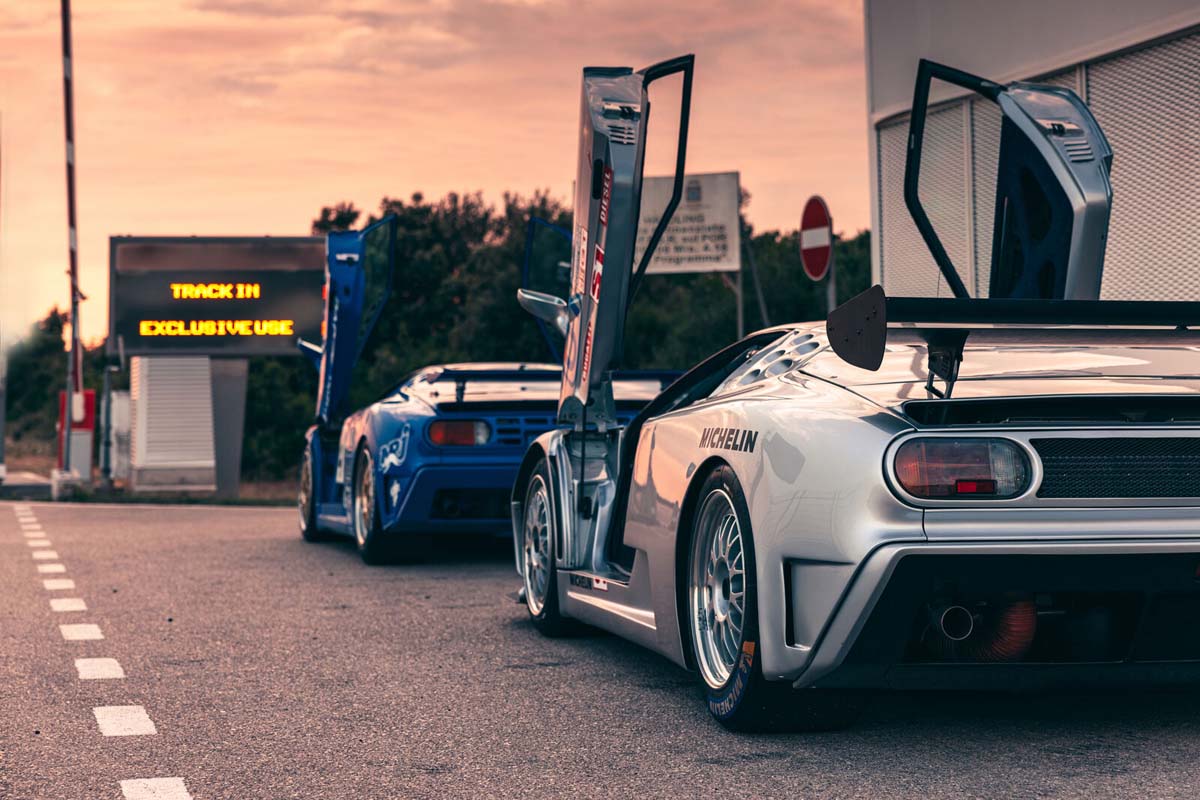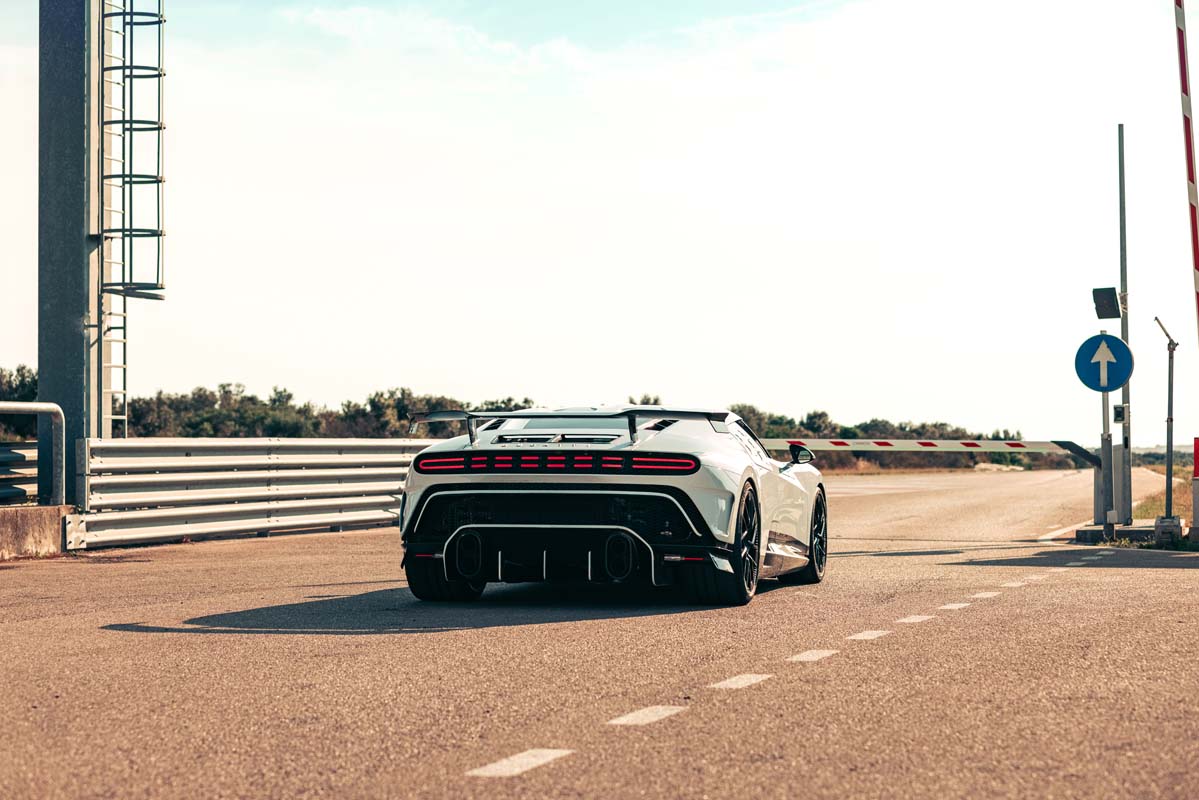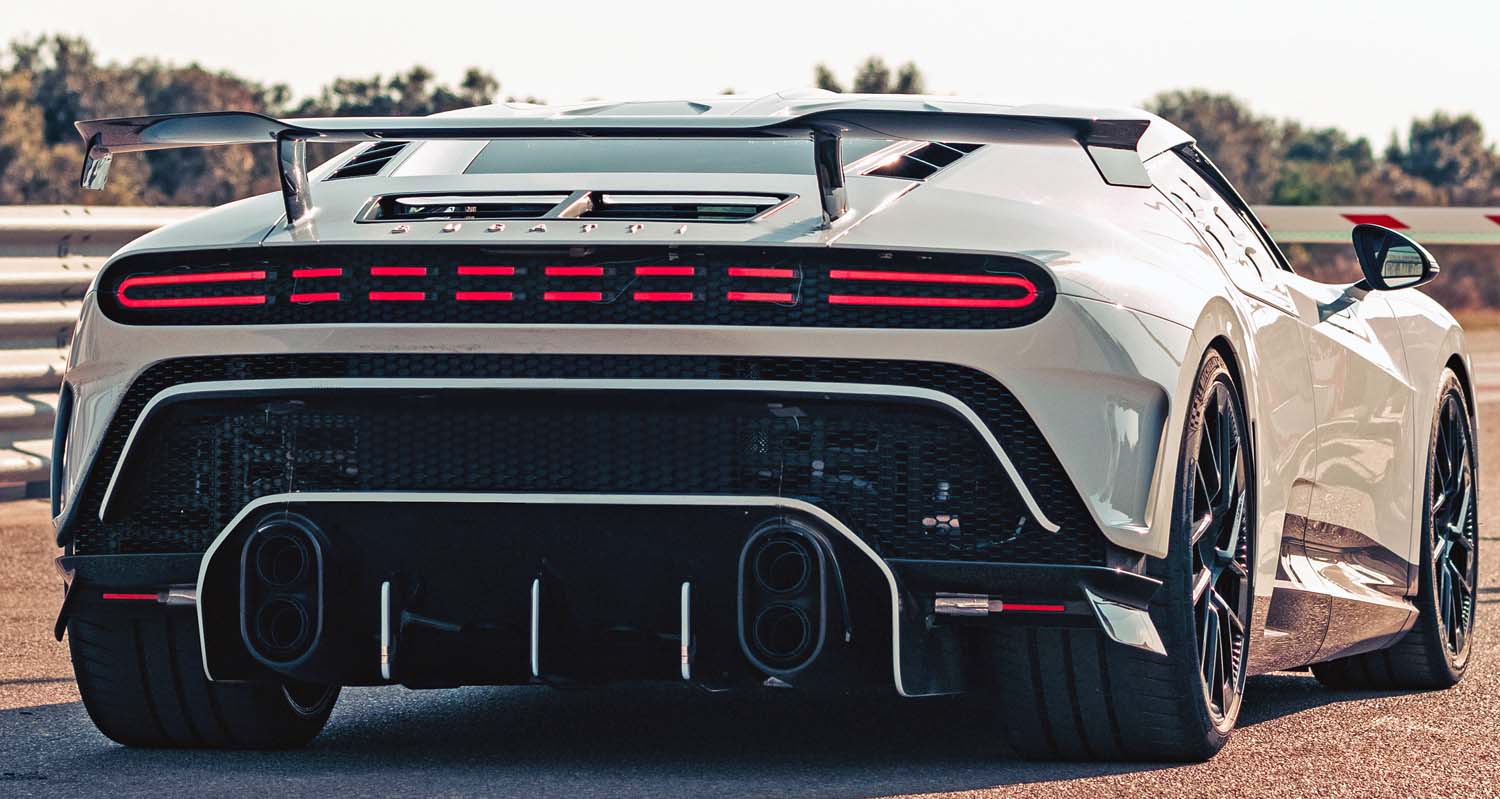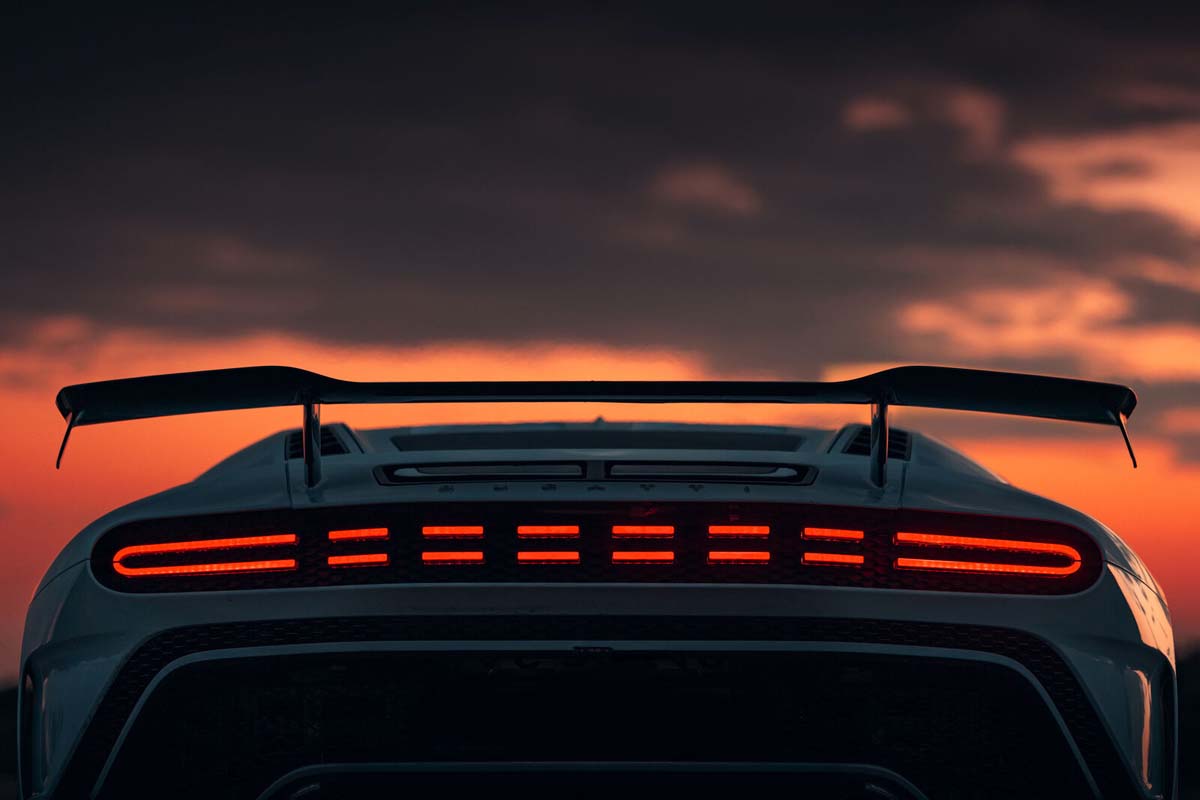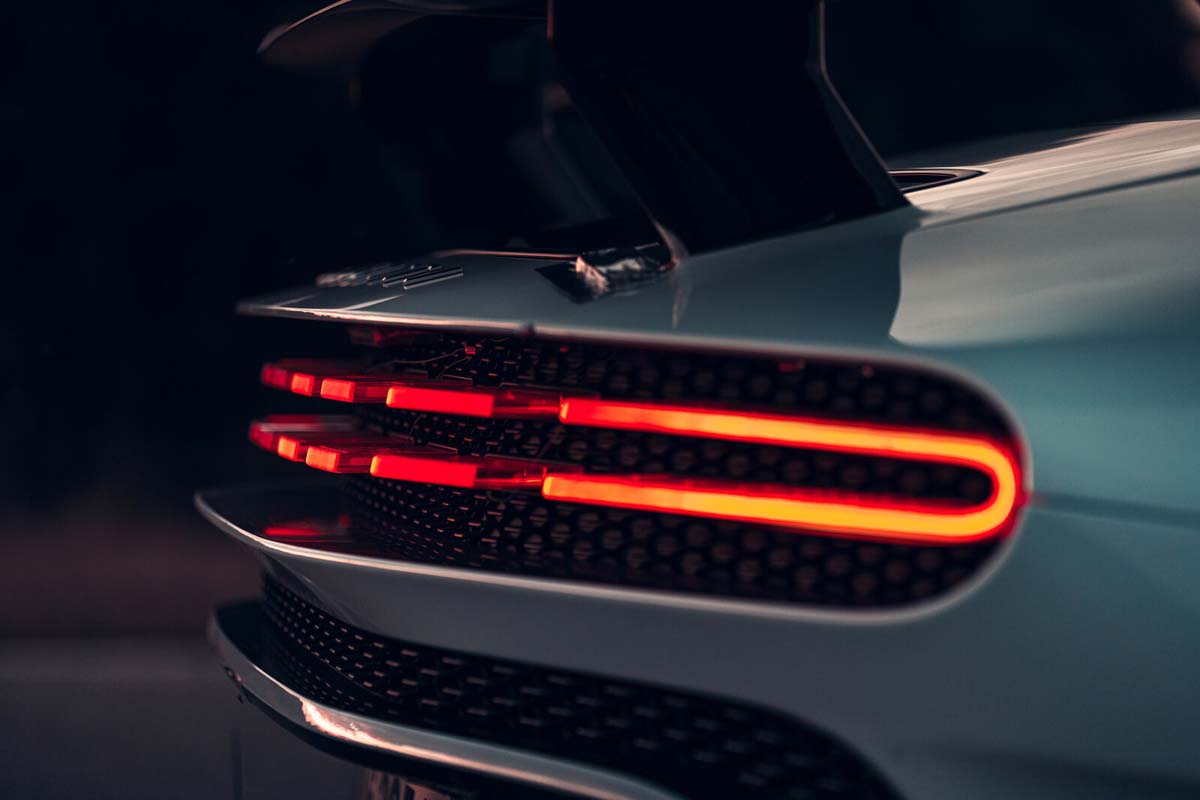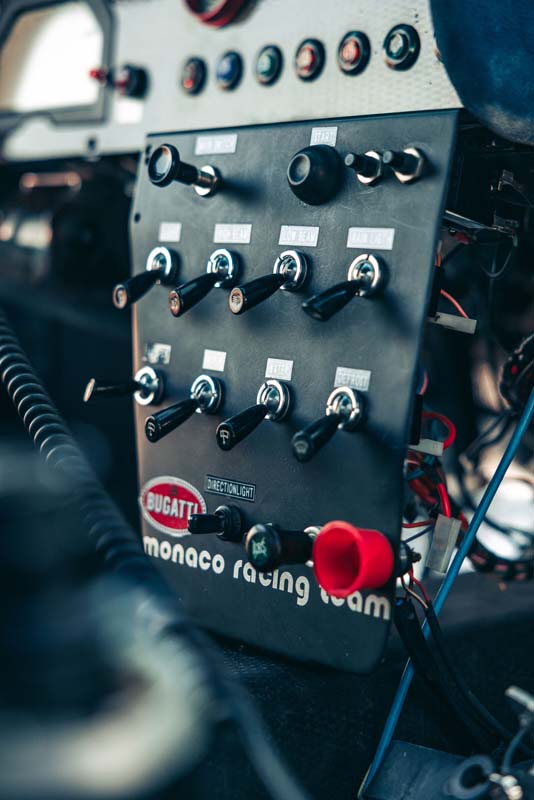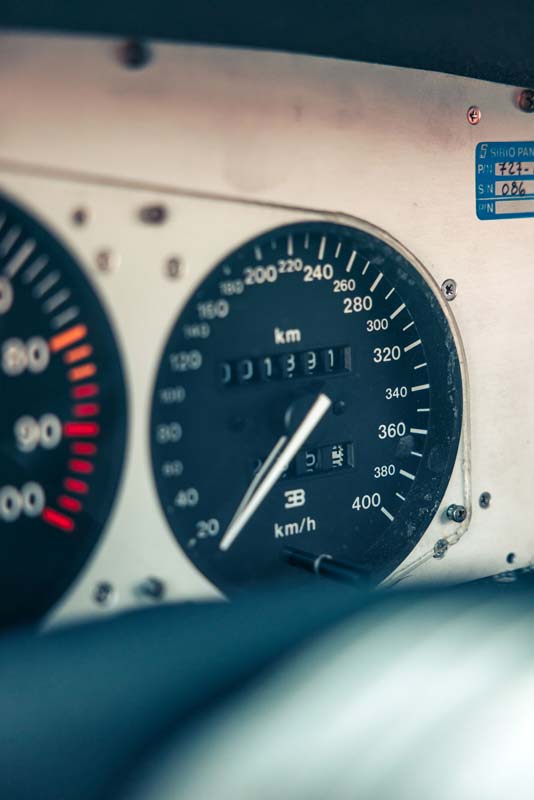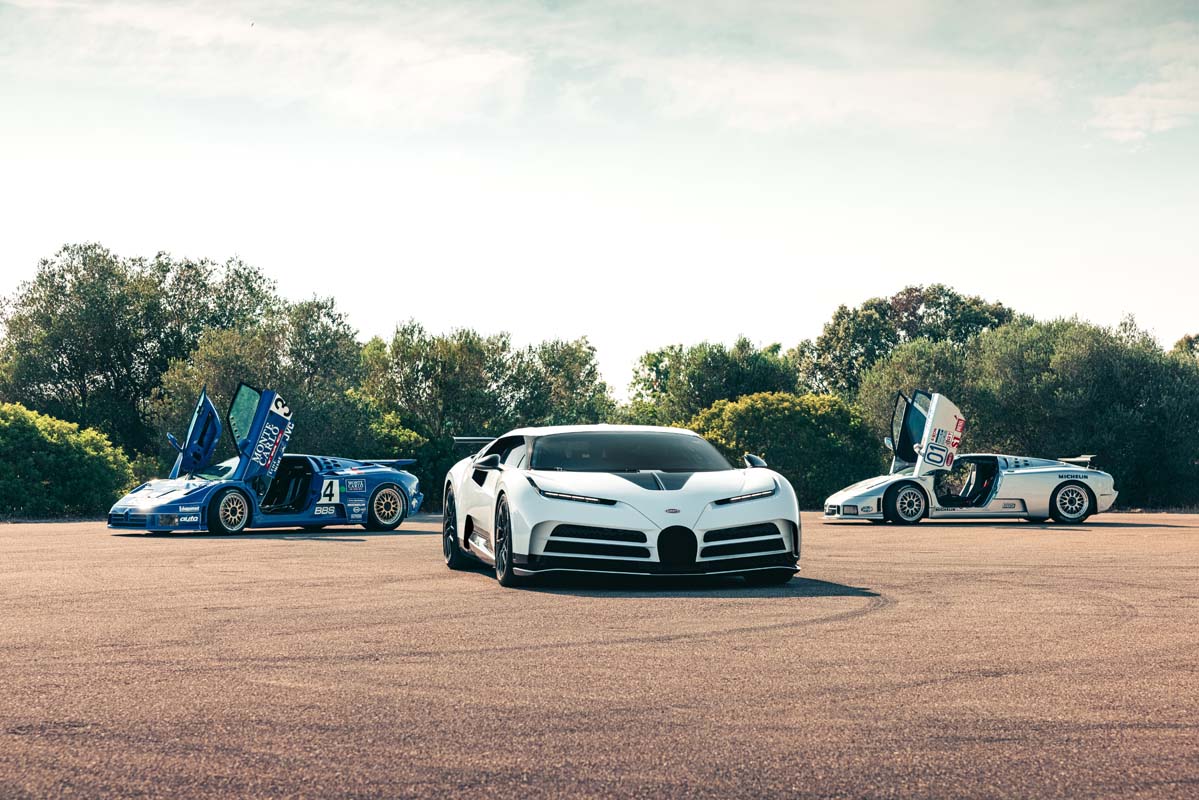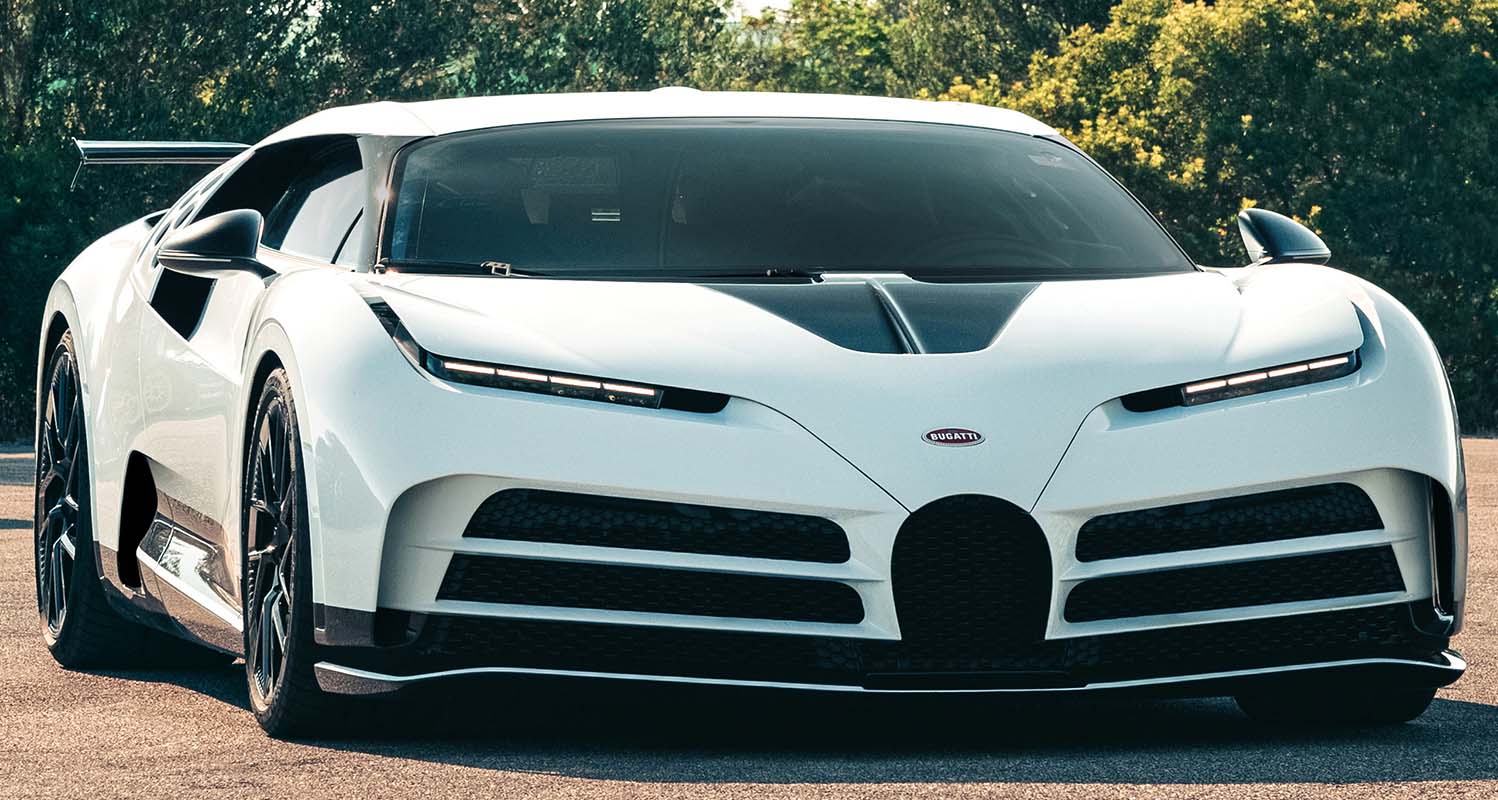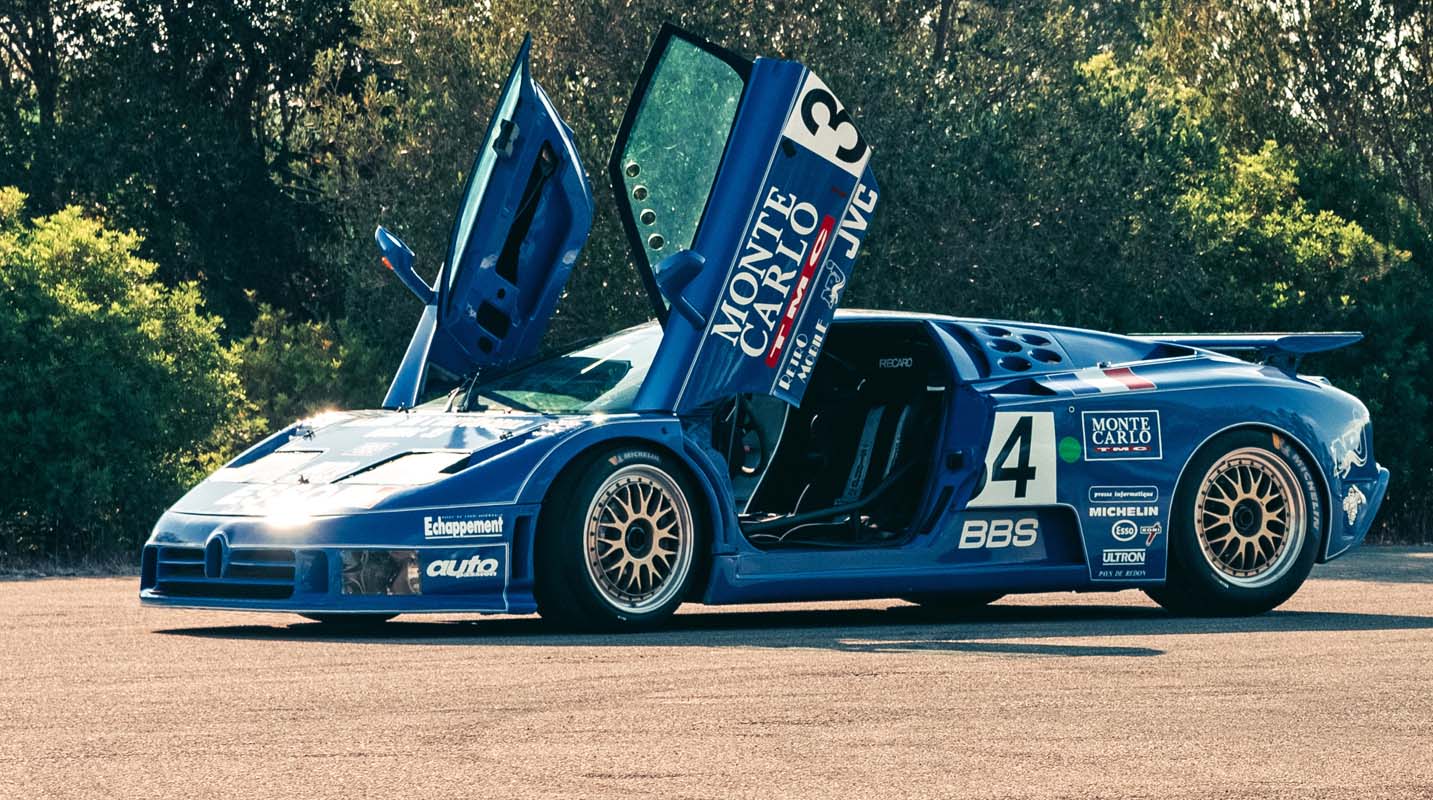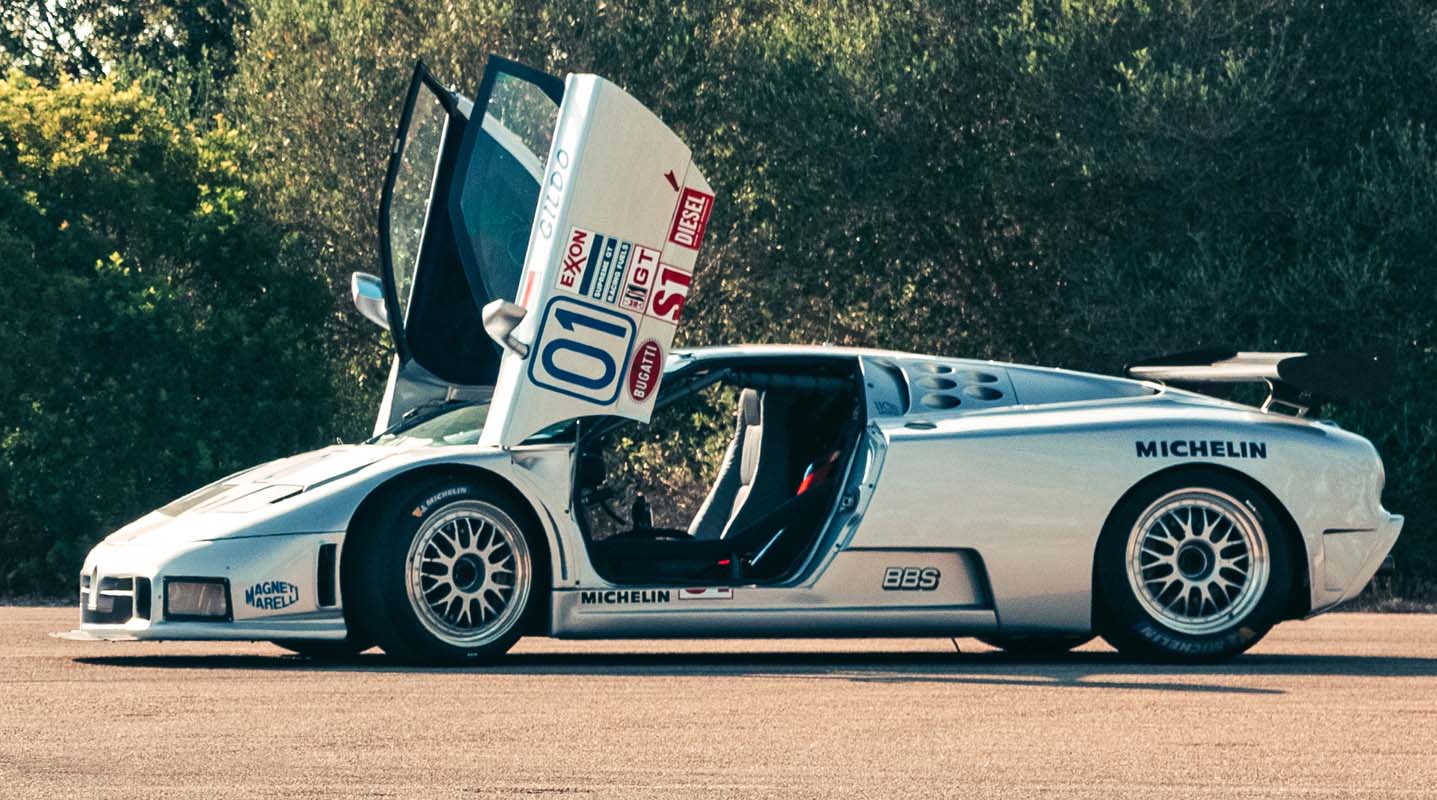
A high-speed course and a challenging handling course – the test tracks and proving grounds in Nardò in southern Italy have served Bugatti as the ideal venue for dynamic refinement for decades. This is where Bugatti engineers put the hyper sports cars to the test under extreme conditions. The exclusive Bugatti Centodieci and two Bugatti EB 110 super sports cars have now met for an enjoyable drive together for the first time.
Before the Centodieci enters into production next year, Bugatti engineers now took the opportunity to intensively fine-tune the definitive setup of the highly exclusive hyper sports car at the Nardò proving ground in Apulia, Italy. The laps performed on the test track serve as dynamic check ahead of the Bugatti Centodieci being made by hand at the atelier in Molsheim – as an homage to the legendary EB 110 and as a symbol of Bugatti’s coachbuilding expertise. The EB 110 was a milestone on the road to reviving the Bugatti brand in Molsheim in 1998.
In addition to the high-speed course, the handling course with its many varied corners proves to be ideal for refining the chassis. The fast right-left-right combinations on the demanding 6.2-kilometer track remain a challenge for vehicles and drivers alike to this day. The Centodieci performs its laps on and away from the proving ground. “With the roads and the road surfaces being different around Nardò, we can even more precisely fine-tune the Centodieci in the area of comfort and further improve its handling,” explains Lars Fischer, Head of Chassis Testing and Application at Bugatti.
A team of 20 that includes chassis experts and specialists in the areas of propulsion and bodywork spends around two weeks in southern Italy working on the new model. “We test all the data previously simulated under real conditions at high speeds and high outdoor temperatures to make sure the Centodieci is perfectly tuned for every region,” says Lars Fischer. The engineers pay the same level of attention to this rare Centodieci as they do to the Chiron2. The fine-tuning always borders on the optimum of what is technically feasible.
A step back in time to 1991
Like stepping back in time by 30 years. “When the two Bugatti EB 110 race cars had been unloaded off the transporter, I instantly felt 30 years younger,” says Loris Bicocchi. As a test driver, Loris was involved in developing the EB 110 from scratch in the early 1990s and clocked up countless kilometers on proving grounds and test tracks like those in Nardò, southern Italy. “Over the years, Nardò has become like a second home to me. I am familiar with every corner and every hillcrest, and could almost drive around the track blindfolded,” explains Loris Bicocchi. He was involved in developing the course for even better vehicle fine-tuning.
One of these vehicles was the blue EB 110 LM – a very special model as it is one of only two officially built factory race cars. Bugatti entered the 24 Hours of Le Mans with the EB 110 LM in 1994. The V12 engine with four turbochargers delivers output of 660 PS, and Bugatti uncompromisingly designed the chassis and passenger compartment with endurance races in mind. The race car accelerates from 0 to 100 km/h in around 3.2 seconds. The silver-colored EB 110 Sport Competizione (SC) is another special model. It was with this vehicle that gentleman driver Gildo Pallanca-Pastor participated in the IMSA series in the USA as well as in other BPR endurance races from 1995. The development work focused on it being weight-reduced, reconceptualized, and incredibly fast.
It was precisely this that Romano Artioli aspired to achieving when he brought Bugatti back to life after a lengthy absence. On September 15, 1990, Artioli officially opened a new factory in Campogalliano. A year later on September 15, 1991, which would have been Ettore Bugatti’s 110th birthday, Artioli unveiled the most modern and most advanced super sports car of its time – the EB 110. This coupe with a 3.5-liter V12 engine, 610 PS, four turbochargers, all-wheel drive, and a lightweight carbon monocoque can hit a top speed of 351 km/h – a world record for a production sports car.
“I associate the EB 110 with the best period of my working life. Although I had worked as a test driver for another brand from 1974, I was able to learn a great deal with Bugatti from 1989, and I grew together with the car and my responsibilities,” relates Loris Bicocchi. The super sports car was created on a blank sheet of paper, with everything needing to be developed anew – the engine, all-wheel drive, chassis, monocoque, and bodywork. The Italian worked for Bugatti until 1995, working in Nardò in the latter stages.
The three iconic vehicles drive in a tight pack and nimbly weave their way around the tight course, braking briefly, taking a corner, then accelerating hard again. “It’s quite an emotional moment for me to be able to see and drive the vehicles again, and to drive the new Centodieci, too,” says Loris Bicocchi following a few fast laps in the various models.
Over 30 years of development mean super sports cars like the EB 110 and the hyper sports car Centodieci are difficult to compare. “Although the EB 110 could already deliver 610 PS as a super sports car 30 years ago, which is a lot, the Centodieci comes close to delivering 1,000 PS more. That’s incredible. Getting this on the road and making it manageable is an incredible feat for the engineers,” says Loris Bicocchi, amazed. The greatest similarities between the vehicles are in particular the permanent all-wheel drive, the four turbochargers, the carbon monocoque, and the power output, which was incredible at the time. “The EB 110 features next to no electronics. It’s a pure super sports car that demands everything of the driver while nevertheless offering a good-natured, fast, and safe drive,” explains Loris Bicocchi.
In modern hyper sports cars, electronic systems regulate the chassis essentially in real time and assistance systems help turn the immense output into propulsion while guaranteeing safe handling. In the expert’s opinion, the biggest difference is in the tires – the grip level of modern tires like those on the Centodieci is extremely high, he says, and this allows for high lateral acceleration. “In spite of the immense output and the incomparable design, the Centodieci offers pure, unfiltered driving enjoyment that’s direct and honest,” the expert explains. The test driver is happy to pass on his decades of expertise and is assisting the Bugatti team with their development of the Centodieci, in particular regarding the chassis setup, which will be soon.
The highly exclusive Bugatti Centodieci will be delivered next year. The few-off model involves just ten vehicles being made for an exclusive clientele, at a unit price of eight million euros.
